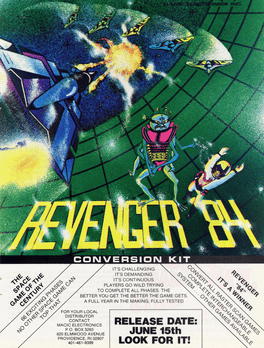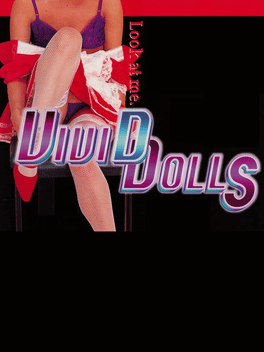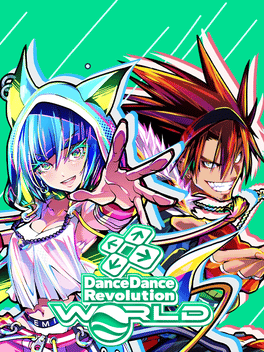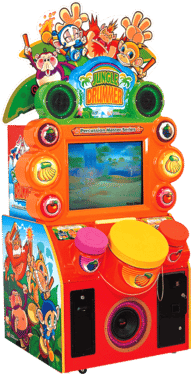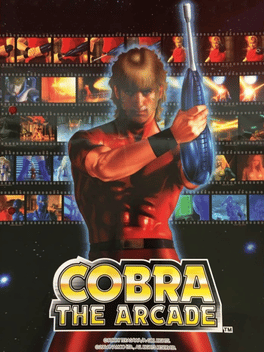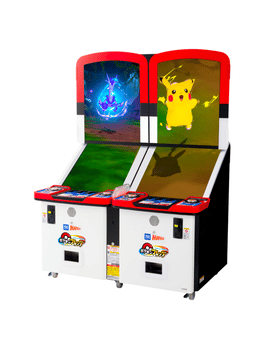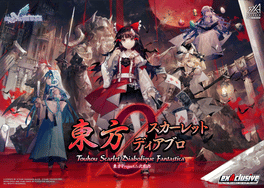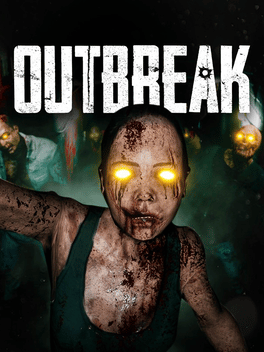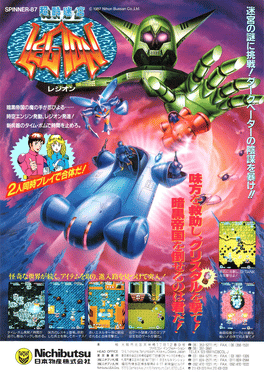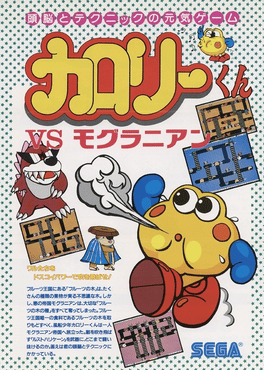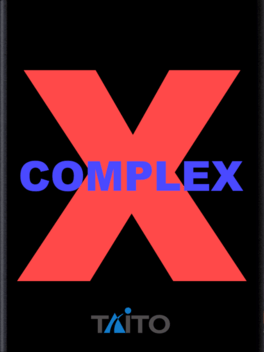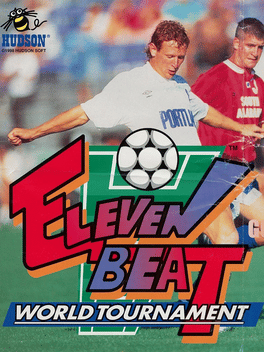Most Popular Arcade Games - Page 20
-
Revenger 84
1984
-
Vivid Dolls
1998
Vivid Dolls
1998
Vivid Dolls is an arcade game where you have to draw shapes while avoiding enemies in order to reveal pictures of girls. It was made for the Aleck 64 arcade cabinet, bult using a Nintendo 64. -
DanceDanceRevolution World
2024
DanceDanceRevolution World is the 19th installment of the Dance Dance Revolution arcade series in Japan (and the 10th outside of Japan). The game was released as a software upgrade for LCD-based arcade cabinets on June 12, 2024, in Asia, Australasia, and the United States. It is the sequel to Dance Dance Revolution A3, and is currently the most recent release. -
Hit The Beat
2013
Hit The Beat
2013
Hit The Beat is a drum-style rhythm game that features bright & colorful graphics with a premise that is easy to approach, Unlike other drumming games, the player is not presented with drum-pads – instead there is a multi-color lit dome with a cartoon enemy drawn on it. Hit any part of the dome to coincide with the approaching notes and your character on screen will slash them away. Also instead of standard drumsticks, either of the players uses a set of sponge sticks to dish out the beats. Complete the song for the boss battle at the end of the level! -
Jungle Drummer
2008
Jungle Drummer
2008
Jungle Drummer is an arcade rhythm-game by International Games System CO., LTD. and Universal Space. -
Cobra The Arcade
2005
Cobra The Arcade
2005
"Cobra The Arcade" is a gun shooting game released by Namco (later Bandai Namco Games) in November 2005. It is based on Buichi Terasawa's manga "Cobra" and the TV series "Space Cobra." The gameplay is enhanced by a controller that resembles the Psycho Gun, and cards that allow data saving and strengthening the Psycho Gun. It uses the system from Time Crisis 3, but a unique feature is the Psycho Shot, which locks on to enemies and takes down multiple enemies at once. -
Pokémon Frienda
2024
-
Touhou Scarlet Diabolique Fantastica
Touhou Scarlet Diabolique Fantastica brings the popular Japanese Touhou series back to arcades worldwide in a remake of Embodiment of Scarlet Devil (Touhou Episode 6). -
Engineerium
Enter an ancient, alien world where gravity is not as it seems. This is the fun, puzzling virtual reality walking journey that'll leave you questioning your own reality! -
Singularity
Enter an immersive, science fiction shooter on a station stranded in the depths of space. Fight to the death against killer robots as you explore narrow corridors, treacherous lifts and zero-gravity environments. You will need to work together with your squad to get out alive, and find the answers you're looking for. -
Outbreak
2023
-
Space Marine VR - Defenders of Avarax
2024
From the Warhammer 40,000 universe, the hotly anticipated Space Marine VR: Defenders of Avarax is coming to Zero Latency VR venues globally. Available in October 2024. -
Calorie-kun vs. Moguranian
Calorie-kun vs. Moguranian is a 1986 arcade game by Graphic Techno EW (a partnership between VIC Tokai and Seibu Lease) and released by Sega in Japan. You play as an egg-shaped being (presumably Calorie-kun) who must navigate through a maze, eating everything on screen. The first button causes the character to attack by blowing or spitting(?) something out of its mouth; this can be used to knock enemies back, set of bombs, destroy enemies by knocking them into bombs, etc. The only mode of vertical movement is with ladders. You can also drop bombs with the second button; exactly when is unknown. A similarly designed mole creature would later appear as the boss of Level 5 in Decap Attack. -
Complex X
1984
Complex X
1984
Complex X is a platform arcade game, released by P.G.D. (Progressive Game Distributors) in April 1985; it was the last game to run on the altered version of Taito's Qix hardware first used for Space Dungeon, The Electric Yo-Yo, Kram, and Zoo Keeper (two Motorola M6809s run at 1.25 MHz and a Motorola M6802 run at 921.6 KHz, with an added Motorola M68705 run at 1 MHz). The game was originally going to be released by Taito America, but the company never released it because they closed down their manufacturing plant in September 1984. However, the game still credits Taito America and has a 1984 copyright date on the title screen. The player must use two eight-way joysticks (one for moving and one for firing) to take control of a nuclear scientist whose objective is to escape from a flooding reactor as the water's level rises below him before running out of air (which is indicated by the "AIR LEFT" meter at the top of the screen) - and every blue-and-magenta square he collects shall add ten shots to his reserve (indicat -
Devil Zone
1980
-
Pokkén Tournament: Update Ver.C07
2016
Version C07 is an update to the arcade version of Pokkén Tournament released on September 13th, 2016. It added the support sets of Victini and Dragonite and new Halloween-themed costumes, as well as Training Gym and Tellur Town (Autumn) as stages. -
Pokkén Tournament: Update Ver.N01
2016
Version N01 was an update released for the arcade version of Pokkén Tournament on February 9th, 2016. Most notably, it made Chandelure available as a Battle Pokémon. -
Pokkén Tournament: Update Ver.A14
2016
Version A14 is an update for the arcade version of Pokkén Tournament released on July 20th, 2016. It added four new characters and made balance changes to bring the game in line with the Wii U version as of Version 1.3, as well as including Reshiram and Cresselia as support Pokémon, adding Mission Panel mode, and expanding the Tutorial mode. -
Eleven Beat World Tournament
1998
An arcade football game featuring international teams. Play a friendly against a friend or play a tournament against CPU players.
